Small SUV comparison review: Hyundai Kona v Honda ZR-V v Nissan Qashqai
There has been an explosion in sales of compact SUVs in the past few years and car makers have responded by creating new niches in the market.
Car Advice
Don't miss out on the headlines from Car Advice. Followed categories will be added to My News.
Compact SUVs have had a growth spurt.
Initially conceived as a high-riding alternative to the small hatchback, they have evolved into family-sized vehicles capable of swallowing kids, prams and sports gear. We pit the all-new Honda ZR-V against Hyundai’s Kona and Nissan’s Qashqai.
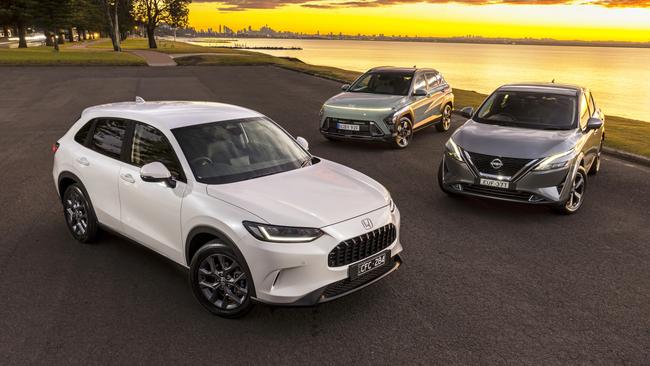
HONDA ZR-V
The ZR-V is based on the excellent new Civic small car and borrows its petrol and hybrid setups. Hybrid power is only available on the top-flight VTi-LX grade and costs an extra $6400.
We are testing the mid-tier VTi-L petrol priced at $43,200 drive-away.
It has manually adjustable faux-leather and cloth seats that are heated in the front, as well as a leather bound gear shifter and steering wheel.
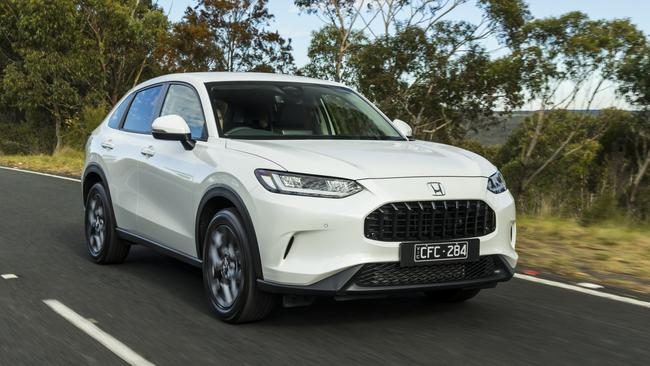
A nine-inch central display, the smallest of the bunch here, is compatible with Android Auto and wireless Apple CarPlay. There’s also a digital driver’s display and four USB charging ports.
Inside the Honda feels the best built of these three, with impressive attention to detail and quality materials used throughout the cabin.
Back-seat passengers are treated to the most legroom of the trio tested but that comes at the expense of boot space, which is below par for this segment.
There are some notable omissions, though. Blind-spot warning and rear cross-traffic alert aren’t included. If you want this potentially lifesaving tech, which should be standard on a family SUV, you’ll need to pay $5000 more for the VTi-LX model.
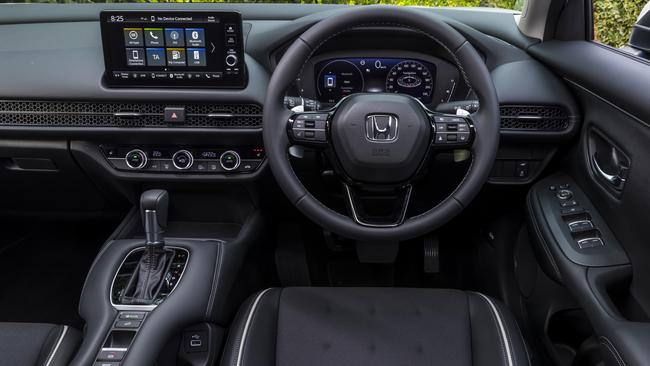
The Nissan and Hyundai both have them. The Honda does, however, provide comprehensive crash protection with 11 airbags.
The ZR-V’s 1.5-litre turbocharged four-cylinder petrol engine is the punchiest here, delivering 131kW and 240Nm through the front wheels via a continuously variable transmission. Its rivals are also front-drive, with CVT autos. Well weighted, accurate steering combines with taut body control and bend hugging poise to deliver a drive experience the others can’t match.
In town it falls back to the pack with a firm ride that delivers more bumps through the driver’s seat.
It’s also the thirstiest here, drinking 7.2L/100km of regular unleaded.
All cars here have a five year/unlimited km warranty but Honda’s servicing is dirt cheap at $995 or $199 a pop over five years.
HYUNDAI KONA
The new Hyundai Kona is easily the most modern looking design of these three. A strip of LED lights that runs the length of the bonnet, combined with the absence of a traditional grille, show it’s designed for the electric car future.
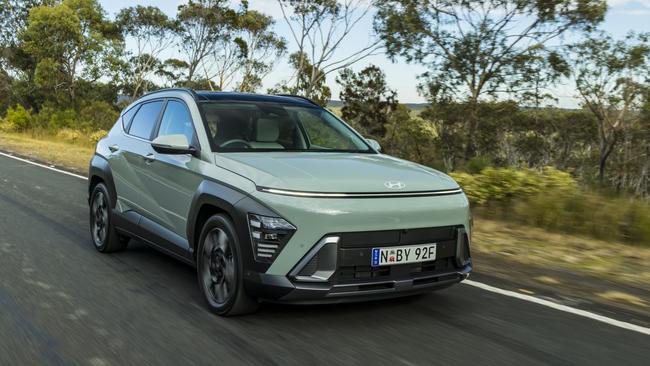
The cheapest variant is priced at about $36,000 drive-away.
We tested the circa-$43,500 drive-away Kona Premium with a non-turbo petrol engine.
Turbo power and all-wheel-drive costs about $7000 more, while electric and hybrid versions are due later this year.
Hyundai has thrown everything but the kitchen sink at the Kona.
Dual 12.3-inch displays are a step above these rivals, while an eight-speaker Bose stereo trumps the standard audio units in the others.
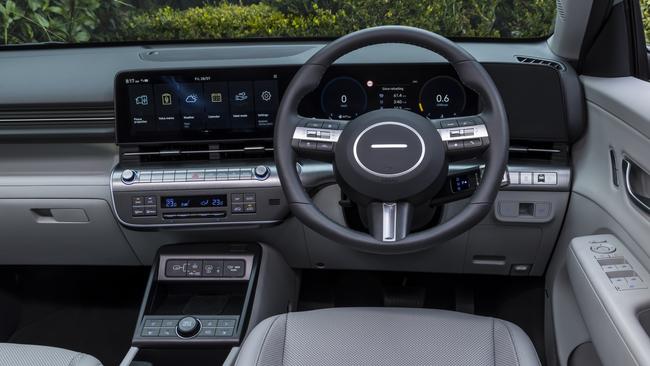
The Kona is the only car here with a wireless device charger.
It’s also the only one with leather-appointed, electrically adjustable and heated front seats, while a heated, leather-bound steering is a godsend on frosty winter mornings. The front seats can also blow cool air when the mercury rises, while the rear window seats are heated.
It has a comprehensive array of crash avoidance tech, although the constant chimes for exceeding the speed limit by a couple of kilometres could land you in a padded cell swatting imaginary flies.
The cabin creates a great first impression but look closer and the quality of materials and finishes don’t match the Honda. The back seat is the tightest of the three, too.
Servicing is about average at $1995 over five years.
The Hyundai’s weakness is its undernourished engine. You’ll need to work the motor hard to eke out the maximum 110kW and 180Nm outputs and it becomes vocal when pushed. It’s a little sluggish when called upon to overtake and climb long hills.
The Kona wins back points around town, though, where its softer suspension makes for a smoother commute.
It’s no slouch through the corners, either, displaying confidence-inspiring balance and body control.
NISSAN QASHQAI
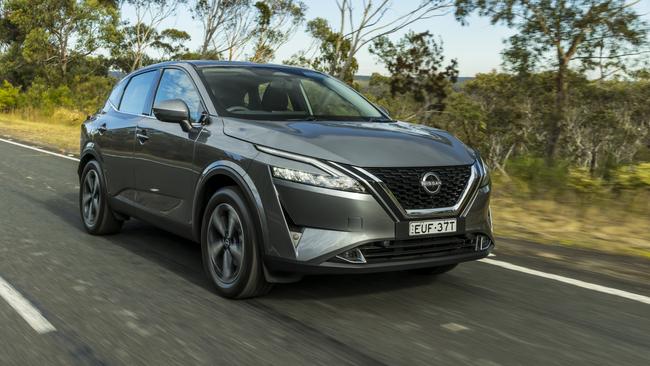
Nissan’s Qashqai range kicks off at about $37,500 drive-away and rises to more than $51,000.
We opted for the ST+ variant, which is cheaper than the Honda and Hyundai at $41,500. The next model up, the ST-L, costs close to $46,000.
The Nissan’s conservative exterior is matched by its plain cabin, which looks cheaper than its rivals, with a plastic steering wheel and cloth seats.
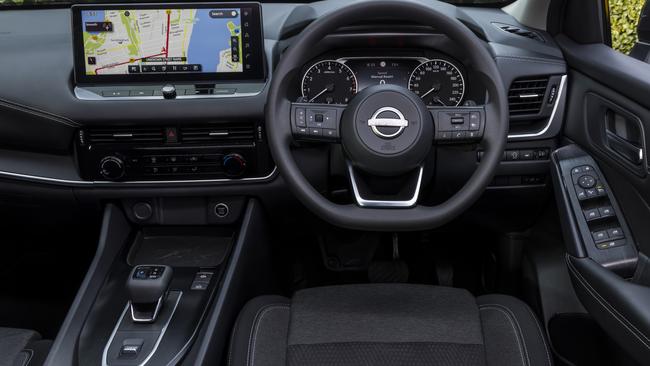
It does, however, strike the best balance between rear legroom and luggage space, while clever rear doors open much wider to make it easier to load kids in and out.
It’s the only one here without a hands-free tailgate and the load area doesn’t fold flat when the rear seats are dropped.
A generous 12.3-inch central display looks the part and comes with satnav as standard, but the driver display feels dated with its mix of analog dials and digital readouts.
Despite costing less it has more standard safety gear than the Honda, including a bird’s eye view camera.
Servicing is prohibitively expensive at just shy of $3000 for five years.
The Qashqai’s 1.3-litre turbo four-cylinder petrol engine makes 110kW and 250Nm and is the most efficient of the bunch, drinking 6.1L/100km. Some of that advantage is lost, though, as it’s the only one that requires pricier premium petrol.
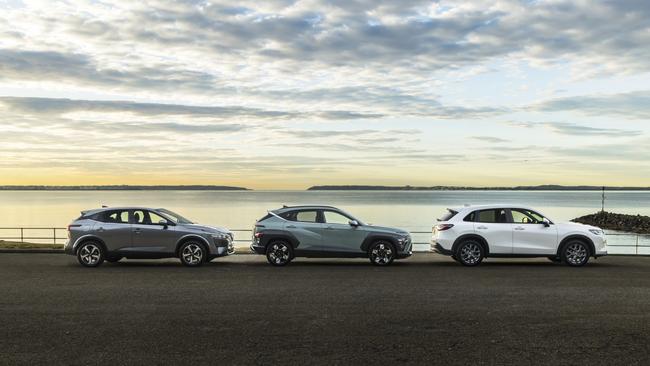
The Qashqai feels punchier than it reads on paper. A liberal dose of torque is delivered low in the rev range, providing plenty of oomph off the mark.
Its CVT auto performs better than the others and doesn’t sound as gruff or coarse.
The Qashqai is noticeably quieter on the highway than the other two and its suspension does a better job than the Honda’s at isolating occupants from bumps and lumps while remaining composed through the corners.
VERDICT
The Nissan is the cheapest here but feels it, with a plain cabin and short equipment list. The Honda is great to drive and well built but leaves out vital safety tech. That leaves the Hyundai, which delivers the most value for the money.
Originally published as Small SUV comparison review: Hyundai Kona v Honda ZR-V v Nissan Qashqai



